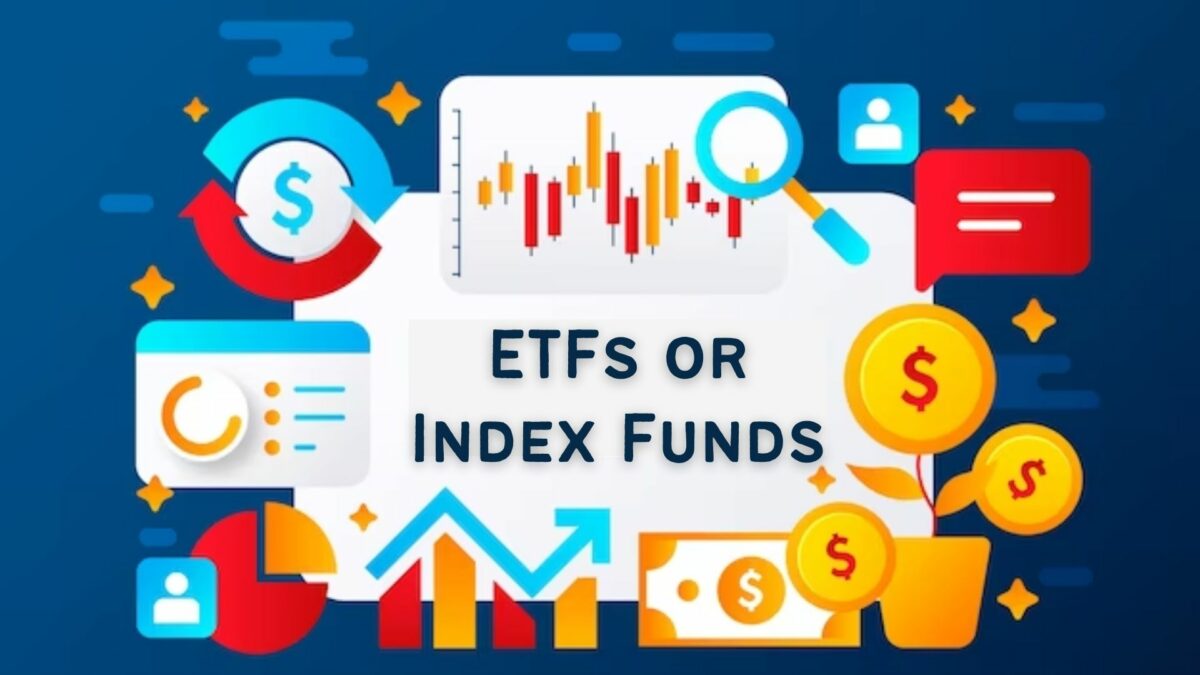If you use value cost averaging for your investment portfolio and you’re investing in index funds, then you’ve probably wondered whether or not you should invest in ETFs or in mutual funds. In general, ETFs have lower expense ratios and are more openly traded, meaning that you can buy and sell them at any point during the day (though you may find yourself tempted to give in to Monkey Brain’s desire to trade more). Mutual funds, on the other hand, tend to have a higher expense ratio, require minimum investments, and can only be bought and sold after the closing bell of a trading day.

What people often fail to consider, though, is how brokerage commissions can eat into the expense ratio of ETFs, making the breakeven for the two much higher than you would initially think.
Let’s take a look at a comparison to see how to do the calculation to determine what that breakeven point would be. I’m going to examine USAA’s S&P 500 Index Fund (USSPX) and the equivalent index fund, the SPDR S&P 500 ETF (SPY). For the comparison, I’m going to consider that I use USAA as a brokerage so that I do not have to account for brokerage commissions in buying the mutual fund; the commission for online stock trades is $8.95.
First, let’s look at the expense ratio for USSPX. The annual net expense ratio is currently reported at 0.25%. That means for every $1,000 you invest in USSPX, USAA takes $2.50 to operate the fund, leaving you with $997.50 in investments in the underlying assets of the fund.
Next, let’s look at the expense ratio for SPY. The annual net expense ratio is currently reported at 0.09%. That means for every $1,000 you invest in SPY, the fund trustee takes $0.90 to operate the fund, leaving you with $999.10 in investments in the underlying assets of the fund.
However, in this scenario, each time you purchase SPY, you also have to pay $8.95 in commissions – a fixed cost. Note, I’m ignoring the $0.01 fee for purchases over 1,000 shares for the sake of simplicity, but it can also be calculated in comparing a breakeven.
Solving to make the amount of investable assets equal for both investments, you must invest $5,574.17. This means that if you invest $5,574.17, you are mathematically indifferent to which one you pick, as both will have the same net amount invested in the underlying stocks of the fund. At this level, I’d pick the ETF because of the liquidity. Above that number, you’d invest in the ETF, and below that number, you’d invest in the mutual fund.
What I have not accounted for is the mispricing of ETFs. According to NYU professor Antti Petajisto, ETFs can often be mispriced by up to 1% away from the underlying value of the assets they hold. A well-armed investor with sufficient market data and the ability and capital to make rapid-fire trades could take advantage of this arbitrage opportunity, as, eventually, the price will revert to its true value. The amount of effort and investment to set up the systems to pull off this trade, particularly compared to the amount of money you’d have available should discourage you from even attempting this. Instead, if you go the ETF route, don’t try to time it, as you have an equivalent chance of buying at an artificially low price as you do an artificially high price.
Depending on the frequency of your value cost averaging and the amount, it is probable that investing in the mutual fund will win out over investing in the ETF because of the brokerage commissions you pay. However, doing this analysis when you are choosing your investment strategy will ensure that you maximize the amount of money going to work for you and minimize the amount of fees and commissions you pay.
Author Profile
- John Davis is a nationally recognized expert on credit reporting, credit scoring, and identity theft. He has written four books about his expertise in the field and has been featured extensively in numerous media outlets such as The Wall Street Journal, The Washington Post, CNN, CBS News, CNBC, Fox Business, and many more. With over 20 years of experience helping consumers understand their credit and identity protection rights, John is passionate about empowering people to take control of their finances. He works with financial institutions to develop consumer-friendly policies that promote financial literacy and responsible borrowing habits.
Latest entries
 Low Income GrantsSeptember 25, 2023How to Get a Free Government Phone: A Step-by-Step Guide
Low Income GrantsSeptember 25, 2023How to Get a Free Government Phone: A Step-by-Step Guide Low Income GrantsSeptember 25, 2023Dental Charities That Help With Dental Costs
Low Income GrantsSeptember 25, 2023Dental Charities That Help With Dental Costs Low Income GrantsSeptember 25, 2023Low-Cost Hearing Aids for Seniors: A Comprehensive Guide
Low Income GrantsSeptember 25, 2023Low-Cost Hearing Aids for Seniors: A Comprehensive Guide Low Income GrantsSeptember 25, 2023Second Chance Apartments that Accept Evictions: A Comprehensive Guide
Low Income GrantsSeptember 25, 2023Second Chance Apartments that Accept Evictions: A Comprehensive Guide

